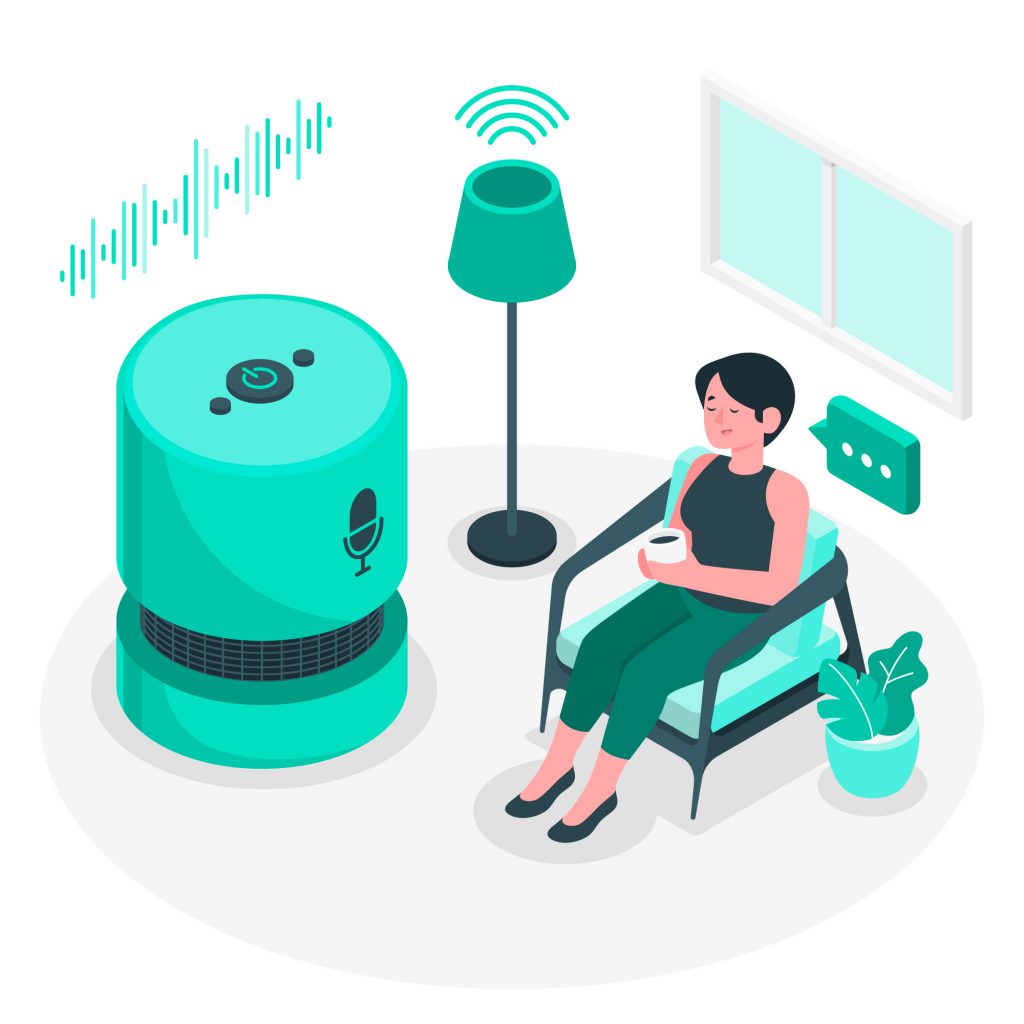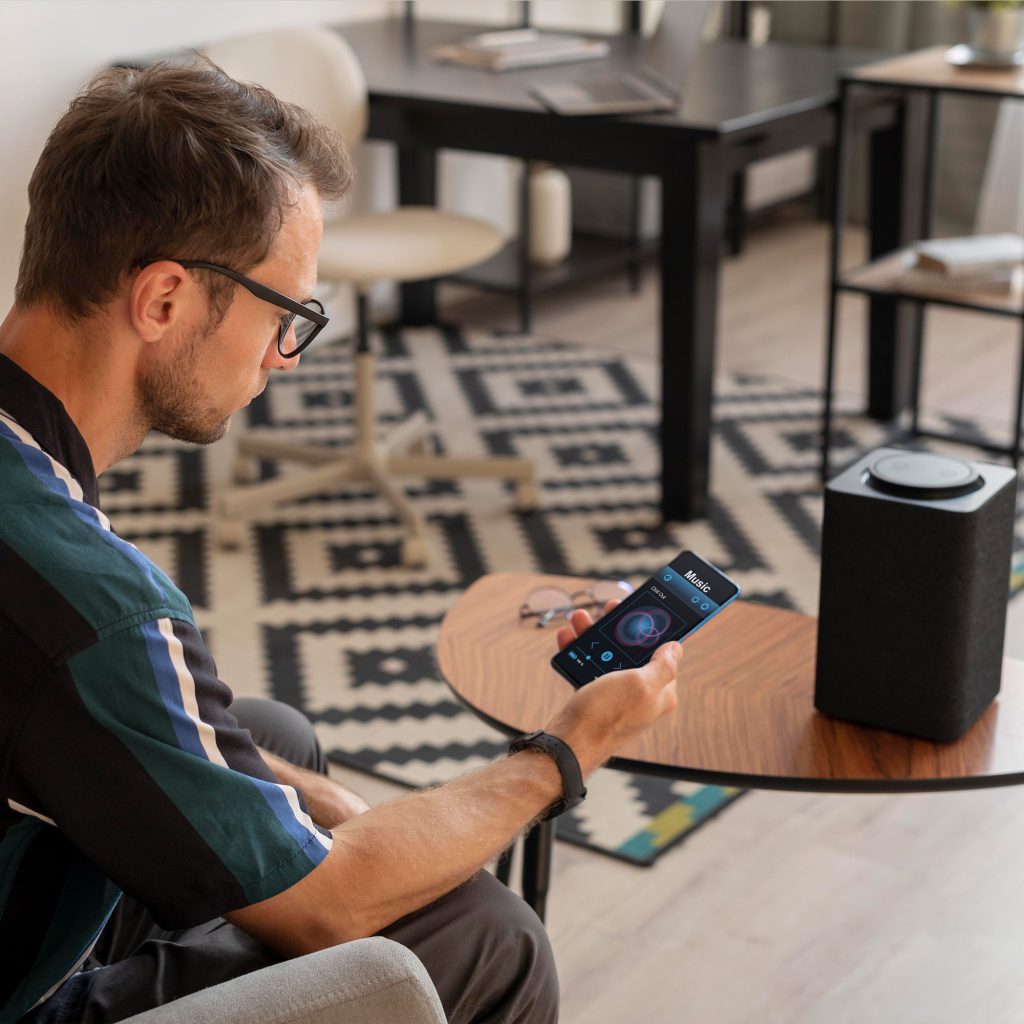“Machine intelligence is the last invention that humanity will ever need to make”
As quoted by Nick Bostrom, Intelligent Virtual Assistants have taken technology to the next dimension.
What is an Intelligent Virtual Assistant, and how does it work?
In essence, an Intelligent Virtual Assistant (IVA) is a software agent that can do activities or provide services for consumers in response to orders and/or inquiries. There are several forms of intelligent virtual assistants available today: for example, chatbots are virtual assistants that are at reach via online chat in general or in particular. People ask their assistants (think Alexa, Siri, Google Assistant) questions and use them to operate their home automation devices as well as to conduct simple chores such as establishing to-do lists, grocery lists, and even calendars using spoken commands. Another feature is the ability to control media playback with your voice.

In a nutshell, an Intelligent Virtual Assistant (IVA) – sometimes known as an Intelligent Personal Assistant (IPA) – is a software-based designed creature that interacts with humans in a more human manner. It does this through its intellect, or Artificial Intelligence (AI), which fuels the assistant’s interactive voice response.
What Are Some Of The Good Examples Of Intelligent Virtual assistants?
As top technology firms roll out more and more devices with intelligent virtual assistants, the expansion of the field of intelligent virtual assistants is increasing at an astonishing pace. As a result, the popularity of intelligent virtual assistants, many of which can be downloaded (if not already pre-installed) on smartphones, has skyrocketed in recent years. Furthermore, virtual assistant capabilities are rapidly expanding, even as more new products join the market with IVA features for email and voice user interfaces.

While Apple’s Siri and Google Assistant which are good examples of Artificial Intelligence, rely heavily on smartphone users, Microsoft relies on Windows PC users, smartphones, and smart speakers. Meanwhile, Amazon delivers it primarily through its Echo smart speaker line and Conversica. Its mail and SMS interface intelligent virtual assistants for business have over 100 million interactions.
The Automatic Digit Recognition machine, sometimes known as ‘Audrey,’ was developed by Bell Labs in 1952. Even though it identified the fundamental units of speech, phonemes, and precisely recognized numerals said by specified talkers, it took up a six-foot-high relay rack and a lot of electricity.
The IBM Shoebox voice-activated calculator, which was released in 1961 and could do digital speech recognition (it recognized 16 spoken words and the numerals 0 to 9), is also worth mentioning.
Another important breakthrough is MIT professor Joseph Weizenbaum’s creation of the first natural language processing computer software, or chatbot, ELIZA, in the 1960s. It generated programmed replies using pattern matching and replacement methods, giving the user the impression of a human conversation.
Harpy, the outcome of a large-scale experiment at Carnegie Mellon University in the 1970s, was able to recognize around 1000 spoken words. In the 1980s, IBM upgraded Shoebox to Tangora, a voice-activated typewriter.
Naturally Speaking software was developed in the 1990s to recognize and transcribe natural human speech into a text at a pace of 100 words per minute. In 1997, the chatbot SmarterChild was released, which searched up subjects, provided weather updates, played games, and could communicate with people to some level.
Apple’s Siri, which debuted as a feature of the iPhone 4S in October 2011, was the first modern digital virtual assistant to be put on a smartphone. It assisted with sending text messages, making phone calls, looking up the weather, and setting an alarm in its most basic version. Since then, it has expanded to include restaurant recommendations, online searches, and even driving instructions.
Amazon announced the debut of Alexa in November 2014, together with the Echo smart speakers. The business launched a service in 2017 that allows users to create conversational interfaces for any sort of virtual assistant or interface.
How Virtual Assistants Work Using The Following Media?
Text:
Online chat (in instant messaging applications or other apps), text messages or SMS, e-mail, or other text-based communication channels are all examples of VAs using text media. Conversica’s intelligent virtual assistant for business is an example of text-based VAs.
Voice:
Today, voice is a popular media. People must be aware of examples such as Amazon’s Alexa on the Amazon Echo device that can perform a variety of functions with voice commands, Siri on iPhones, and Google Assistant on Android mobile devices.
Photos:
Here, pictures communicate the messages through the capturing and uploading of images. For example, consider Samsung Bixby on the Galaxy S8.
Multiple Media:
There are services that utilize numerous media, such as Google Assistant. It is accessible via chat on Google Allo, Google Messages, and voice on Google Home smart speakers.
How Virtual Assistants Are Evolving?
AI approaches, such as Machine Learning (ML) algorithms, are still being used by many virtual assistants to evolve. Image processing is also possible with assistants like Google Assistant (which includes Google Lens) and Samsung Bixby, which can detect items in photographs and help consumers obtain better results from them.

It’s simple to set up a virtual assistant that is based on the technology of Artificial Intelligence like this. One can either use text or their voice to activate using the VA with a pre-determined wake phrase or words. “Hey, Siri,” “OK Google” or “Hey Google,” “Alexa,” or “Hey Microsoft” are such phrases.
Conclusion
When we talk about smartphones or smart homes, we usually bring up Amazon’s Alexa, Apple’s Siri, Microsoft’s Cortana, or Google Assistant, which are all instances of Intelligent Virtual Assistants (IVAs). In this blog article, we’ll look at what the phrase “intelligent virtual assistant” implies, how they operate, and how they’re of use today.
 1323
1323

